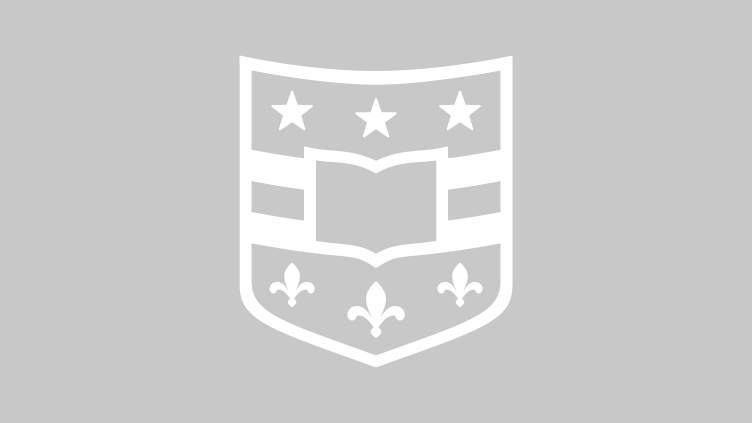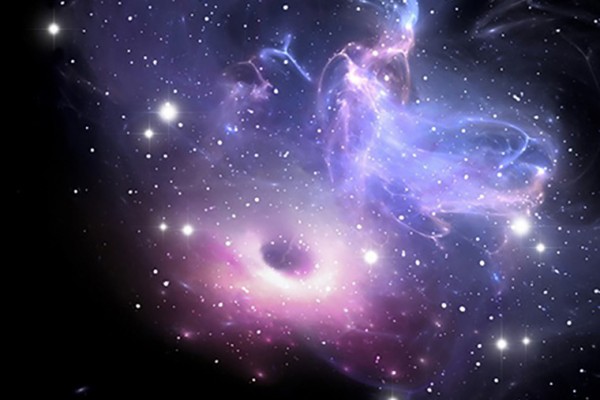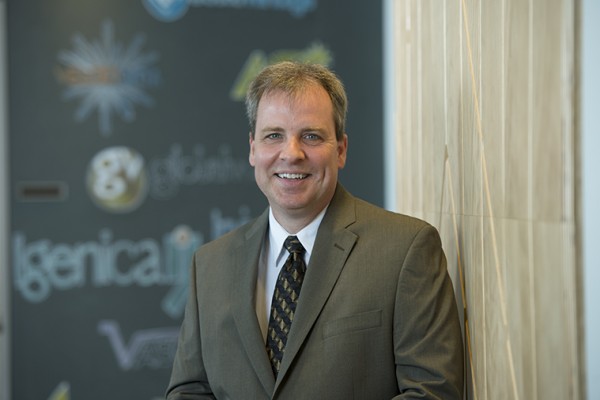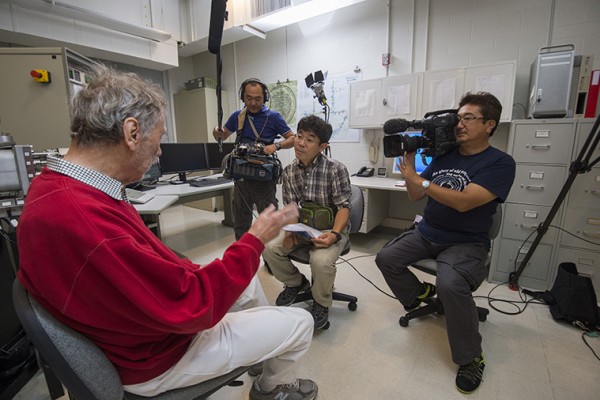Major Indo-U.S. Advanced Bioenergy Consortium launches
The government of India’s Department of Biotechnology,
Indian corporate leaders and Washington University in St. Louis have
invested $2.5 million to launch the Indo-U.S. Advanced Bioenergy
Consortium for Second Generation Biofuels (IUABC). The goal of the center is to increase biomass yield in
plants and algae, enabling downstream commercial development for
cost-effective, efficient and environmentally sustainable production of
advanced biofuels.
Black holes are topic of 2014 Robert M. Walker Distinguished Lecture
The topic of the 2014 Robert M. Walker Distinguished Lecture the evening of Oct. 23 will be black holes. The speaker is Ramesh Narayan, a Harvard astrophysicist who has studied the event horizon and the spin of these celestial enigmas. The talk, which starts at 7 p. m. in Whitaker Hall on the Danforth Campus, is free and open to the public.
Winning by losing: School of Engineering scientists find a way to improve laser performance
Scientists from the School of Engineering & Applied
Science at Washington University in St. Louis have shown a new way to
reverse or eliminate energy loss in optical systems such as lasers. They are doing so by, ironically, adding loss to a laser
system to actually reap energy gains. In other words, they’ve invented a
way to win by losing.
The dwindling stock of antibiotics, and what to do about it
Pharmaceutical companies have largely abandoned the business of discovering and developing antibiotics and our stock of these “miracle drugs” is beginning to shrink. Michael Kinch and his colleagues at Washington University in St. Louis are working to create new models for drug discovery that could replace the failed private enterprise model.
Washington University alum shares Nobel Prize in chemistry
Washington University in St. Louis alumnus W. E. Moerner, PhD, has been awarded the Nobel Prize in chemistry. Moerner shares the award, announced Oct. 8 by the Royal Swedish Academy of Sciences, with Eric Betzig, PhD, of the Howard Hughes Medical Institute, and Stefan W. Hell, PhD, of the Max Planck Institute for Biophysical Chemistry, in Germany. The trio received the award for developing super-resolved fluorescence microscopy.
Wang receives prestigious NIH BRAIN initiative award
Lihong Wang, PhD, the Gene K. Beare Distinguished
Professor of Biomedical Engineering in the School of Engineering &
Applied Science at Washington University in St. Louis, has received a
prestigious BRAIN Initiative Award from the National Institutes of
Health (NIH). Wang’s three-year, $2.7 million award, is one of 58 grants totaling $46 million announced Sept. 30 by Francis S. Collins, MD, PhD, director of the NIH, in Washington, D.C.
‘The process by which drugs are discovered and developed will be fundamentally different in the future’
Over the past several decades, Michael Kinch of Washington University in St. Louis says, the pharmaceutical industry has managed to dismantle itself. In a provocative series of articles and interviews, Kinch, the director of the Center for Research Innovation in Businessat the university, has been describing the history of this dismantling and its implications for the future of medicine.
Japanese film crew talks stardust with physicists
A film crew from NHK, the Japan Broadcasting Corp., visited the Danforth Campus of Washington University in St. Louis last week to film for a series called “Cosmic Front HOTLINK” about the wonders of the universe. Here, they interview Ernst Zinner, PhD, research professor of physics in Arts & Sciences. He pioneered techniques to study tiny bits of matter from stars that died before the solar system was born.
Camera developed at Washington University sheds light on mate choice of swordtail fish
A group of researchers have used a special camera developed by Viktor Gruev, PhD, associate professor of computer science and engineering at Washington University in St. Louis, to discover that female northern swordtail fish choose their mates based on a display that is similar to a peacock showing its feathers.
Aiming for the stars
Early in September, the X-Calibur mission, preparing for launch at the Columbia Scientific Balloon Facility in Fort Sumner, N.M., put its pointing system through its paces to make sure all of its parts were working in programmed harmony.
Older Stories




